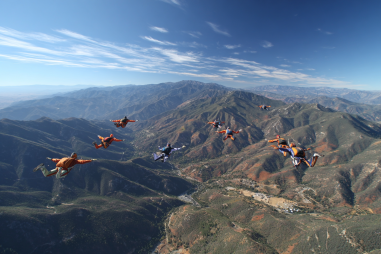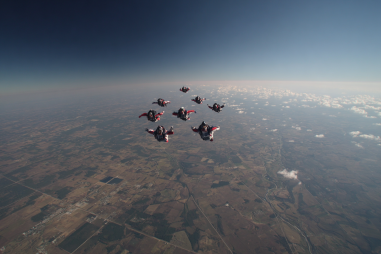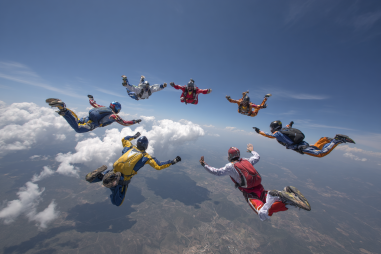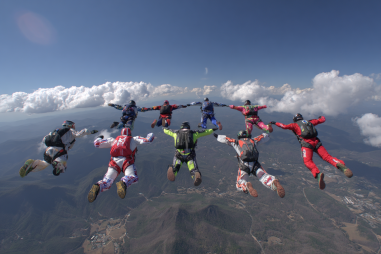Skydiving is an exhilarating experience that attracts many beginners eager to feel the thrill of freefall and the tranquility of floating beneath a parachute canopy. However, with such an extreme sport, safety is paramount, especially for those just starting out. Understanding and adhering to proper skydiving safety procedures will not only enhance your confidence but help ensure your jump is both fun and incident-free. This guide will walk you through the critical safety steps every beginner should know before, during, and after their first skydive.
Why Safety Procedures are Critical for Beginners
When you’re new to skydiving, the unfamiliar environment and sheer speed of the experience can be intimidating. Safety procedures exist to reduce risks and make sure every jump goes smoothly. For beginners, the margin for error is smaller because you’re still learning how to operate equipment, manage your body in freefall, and respond to emergencies. By following established safety protocols, you’ll build the muscle memory and mental clarity needed to make quick, correct decisions during the jump. Ultimately, rigorous safety measures protect your life and assure confidence as you enjoy the sport.
Pre-jump Training and Orientation
Before your first jump, comprehensive training and orientation are essential. Most skydiving centers provide beginner courses that cover the basics of freefall body position, canopy control, and emergency responses. This usually includes:
- A detailed walkthrough of what to expect during each phase of the jump
- Instruction on how to exit the aircraft safely
- Demonstrations on parachute deployment and steering
- Guidance on landing techniques to avoid injury
Additionally, instructors will explain the safety equipment and backup systems you’ll be using. This knowledge isn’t just about theory—it’s about ingraining safe habits that become automatic under the adrenaline rush of skydiving.
Gear Familiarization and Checks
Skydiving gear can be complex for newcomers, so familiarizing yourself with it is a critical step. Your instructor will introduce you to essential components such as your main parachute, reserve parachute, automatic activation device (AAD), helmet, altimeter, and jumpsuit. Understanding how each piece functions helps you feel more in control and prepared.
Before every jump, thorough equipment checks are mandatory. This includes:
- Inspecting parachute packing and rig integrity
- Ensuring the automatic activation device is set correctly
- Checking helmet fit and visibility
- Verifying altimeter functionality
- Confirming that harnesses and straps are secure and adjusted
Never hesitate to ask your instructor questions or request a double check if you’re unsure. Safety begins with having fully functional, properly fitted gear.
Communication Signals and Protocols
Since you won’t be able to speak during freefall, skydiving relies on specific hand signals and protocols for communication between jumpers and with instructors. These signals allow you to convey critical information quickly and clearly, such as:
- Pointing at altimeters to indicate altitude
- Thumbs up or down to signal readiness or issues
- Hand waves to indicate landing direction or concerns
- Body language cues used in tandem jumps to maintain formation
Understanding and practicing these signals during training helps ensure smooth coordination. Communication protocols continue after deployment during canopy flight and landing to maintain safety among multiple skydivers in the airspace.
Guidelines During Freefall and Canopy Flight
Once you exit the aircraft, specific safety guidelines come into play during freefall and the parachute’s descent phase. Key points for beginners include:
- Maintaining a stable, belly-to-earth body position to control fall rate and direction
- Monitoring your altitude frequently using an audible or visual altimeter
- Deploying your parachute at the designated altitude, usually between 3,000 and 5,000 feet
- After deployment, steering to avoid other jumpers and obstacles on approach
- Preparing for a controlled, safe landing by flaring at the right height to slow descent
Adhering to these guidelines minimizes risk factors such as collisions, disorientation, and hard landings, which are especially important for those still mastering the coordination required during this dynamic experience.
Emergency and Backup Procedures
While skydiving equipment is designed with redundancy and safety in mind, emergencies can still happen. Beginners must understand the critical emergency procedures, which include:
- Recognizing malfunction indicators such as twists or failure to deploy
- Deploying the reserve parachute if the main chute fails or is unusable
- Using the automatic activation device (AAD) that will deploy the reserve parachute automatically if you are unable to do so
- Following guidelines for emergency landings or cutaway maneuvers
- Remaining calm and focused to follow trained protocols
Practicing these steps during training and reviewing emergency scenarios repeatedly ensures you’ll react correctly under pressure.
Post-jump Debrief and Review
After landing, beginners should participate in a debrief with instructors to discuss the jump. This review is invaluable for identifying what went well and areas that need improvement. It often covers:
- Assessment of body position and canopy control
- Review of altitude awareness and deployment timing
- Discussion of any equipment issues or uncomfortable moments
- Recommendations for training focal points before the next jump
The debrief is not just about critique but also encouragement and motivation to build skill and confidence. It solidifies a safety mindset that is essential for ongoing skydiving success.
Encouragement for Beginner Skydivers
Jumping out of a plane for the first time can be nerve-wracking, but remember that every experienced skydiver started with their first leap. Mastering skydiving safety procedures takes time and practice, and it’s perfectly normal to feel uncertain initially. Surround yourself with supportive instructors and fellow beginners who understand your challenges. Stay patient with your progress and keep focusing on safety as your top priority.
As your skills grow and your understanding of procedures deepens, you will find greater joy and freedom in the sport. Skydiving is an extraordinary adventure made safe through disciplined adherence to well-established guidelines. Trust the process, follow the safety steps, and soon you’ll be sharing your own exhilarating stories of sky-high fun and confidence.







